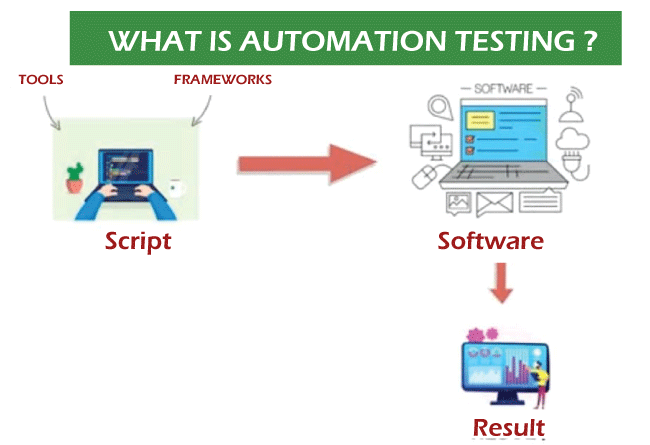Automation Testing Structures: Streamlining Complicated Testing Situations
Wiki Article
From Handbook to Automated Testing: A Comprehensive Overview to Transitioning Smoothly and Efficiently
In the world of software application testing, the change from handbook to automated processes has actually ended up being an increasingly vital change for organizations looking for to improve effectiveness and accuracy in their screening practices. The trip from guidebook to automated testing is not without its challenges, yet when approached strategically and with a clear strategy in mind, the benefits can be significant.Benefits of Automated Testing
Automated screening offers many advantages, enhancing effectiveness and precision in software advancement procedures. Automated examinations can be run at the same time on numerous devices and running systems, considerably speeding up the testing stage compared to hands-on screening.In addition, automated screening guarantees a higher degree of accuracy in spotting defects. Uniformity in testing is additionally boosted, as automated tests execute the very same steps precisely each time they are run.
Choosing the Right Tools

First of all, examine your demands and goals. Understand the extent of your task, the modern technologies included, and the capability of your team. This evaluation will certainly assist you identify the functions and capacities you require in your testing devices.
Second of all, think about the compatibility of the tools with your existing systems and procedures. Seamless integration with your existing software application advancement lifecycle is important to ensure a smooth change to automation.
Furthermore, assess the scalability and flexibility of the devices. As your screening needs advance, the tools should have the ability to adapt and accommodate adjustments successfully.
Finally, consider the assistance and area around the tools. When applying automated screening, durable assistance and an energetic individual community can provide beneficial sources and support. By carefully taking into consideration these elements, you can pick the right tools that align with your needs and set the stage for an effective shift to automated testing.
Creating Effective Test Scripts

When crafting test scripts, it is important to think about the particular demands of the software program being evaluated and make certain that the scripts resolve all vital functionalities. Descriptive and clear naming conventions for examination scripts and examination instances can improve readability and maintainability. In addition, incorporating mistake handling devices within the test manuscripts can aid in determining and resolving issues immediately.
Furthermore, arranging examination scripts into modular elements can improve reusability and scalability, minimizing redundancy and boosting efficiency in examination read the full info here manuscript maintenance. Regular testimonials and updates to test scripts are critical to equal advancing software application demands and capabilities. By following these principles, testers can produce effective and robust examination manuscripts that contribute substantially to the success of automated testing processes.
Integrating Automation Into Workflows
Effective assimilation of automation tools into existing operations streamlines processes and improves efficiency within software program development cycles. When incorporating automation into workflows, special info it is essential to determine repeated tasks that can be automated to save time and decrease human error. By perfectly integrating automated testing tools like Selenium or Appium into the software development lifecycle, teams can achieve faster feedback on code changes, resulting in quicker insect discovery and resolution. This assimilation enables continual screening throughout the growth procedure, ensuring that any concerns are identified at an early stage, resulting in higher software application high quality. Additionally, automation can be used to cause examinations immediately after each code commit, providing prompt recognition and maximizing testers to focus on more facility circumstances. Appropriate integration of automation devices calls for partnership between development, screening, and procedures teams to establish a unified workflow that optimizes effectiveness and efficiency in providing high-grade software program products.Making Certain a Smooth Transition
Efficiently transitioning to automated testing includes thorough planning and cautious implementation to reduce disturbances and take full advantage of efficiency in the software application development process - automation testing. To make certain a smooth transition, it is necessary to begin by performing a complete analysis of the current testing procedures and recognizing areas where automation can bring one of the most considerable advantages. Involving with all stakeholders early while doing so, consisting of programmers, testers, and job managers, is important for amassing assistance and buy-in for the automation campaignInteraction is essential during this transition stage. Clear interaction of the goals, benefits, and assumptions of automated testing assists to handle any resistance or concerns that might occur. Additionally, supplying adequate training and sources for employee to upskill in automation devices and methods is important for guaranteeing a successful transition.

Conclusion
To conclude, transitioning from handbook to automated screening uses countless advantages, including increased efficiency and dependability. By choosing the proper devices, composing reliable examination manuscripts, and incorporating automation flawlessly right into operations, companies can ensure a smooth and successful shift. It is vital to accept automation as a useful possession in software program screening procedures to enhance general high quality and productivity.In the realm of software testing, the change from handbook to automated processes has come to be find more information a significantly essential change for companies seeking to enhance efficiency and precision in their screening methods. Automated tests can be run simultaneously on numerous gadgets and operating systems, considerably speeding up the testing stage contrasted to hands-on testing. Uniformity in screening is also improved, as automated examinations perform the same actions exactly each time they are run.To guarantee the effective application of selected screening devices, the creation of reliable examination scripts plays an essential duty in verifying the functionality and efficiency of automated processes - automation testing. By adhering to these principles, testers can create durable and effective test manuscripts that add substantially to the success of automated testing procedures
Report this wiki page